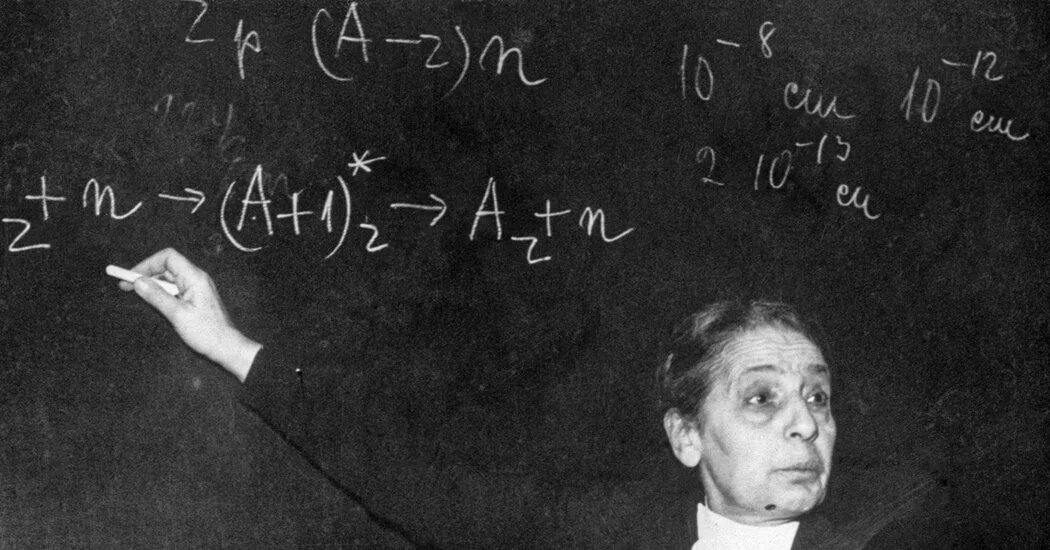Lise Meitner developed the theory of nuclear fission, the process that enabled the atomic bomb. But her identity - Jewish and a woman— barred her from sharing credit for the discovery, newly translated letters show.
🤖 I’m a bot that provides automatic summaries for articles:
Click here to see the summary
There is a memorable scene in “Oppenheimer,” the blockbuster film about the building of the atomic bomb, in which Luis Alvarez, a physicist at the University of California, Berkeley, is reading a newspaper while getting a haircut.
Lise Meitner is one of many women in science who failed to receive due credit for their work, including, perhaps most notably, Rosalind Franklin, the chemist who contributed to the discovery of the double helix structure of DNA in 1953.
She moved to the University of Berlin and began auditing classes taught by Max Planck, who won the 1918 Nobel Prize in Physics — and who generally did not allow women to attend his lectures.
Many Jewish scientists left the country, but Meitner stayed, thinly protected by her Austrian citizenship and keen to hang on to the rare opportunity for a woman to conduct scientific research.
In 1945, after atomic bombs were dropped on Hiroshima and Nagasaki, leading to the end of the war, some newspaper stories claimed that Meitner had smuggled the recipe for the weapon out of Nazi Germany in her purse.
As an inverse comparison, scientists note the case of Chien-Shiung Wu, a Chinese American physicist who ran experiments showing that some particle interactions do not obey mirror symmetry.
Saved 92% of original text.
🤖 I’m a bot that provides automatic summaries for articles:
Click here to see the summary
There is a memorable scene in “Oppenheimer,” the blockbuster film about the building of the atomic bomb, in which Luis Alvarez, a physicist at the University of California, Berkeley, is reading a newspaper while getting a haircut.
Lise Meitner is one of many women in science who failed to receive due credit for their work, including, perhaps most notably, Rosalind Franklin, the chemist who contributed to the discovery of the double helix structure of DNA in 1953.
She moved to the University of Berlin and began auditing classes taught by Max Planck, who won the 1918 Nobel Prize in Physics — and who generally did not allow women to attend his lectures.
Many Jewish scientists left the country, but Meitner stayed, thinly protected by her Austrian citizenship and keen to hang on to the rare opportunity for a woman to conduct scientific research.
In 1945, after atomic bombs were dropped on Hiroshima and Nagasaki, leading to the end of the war, some newspaper stories claimed that Meitner had smuggled the recipe for the weapon out of Nazi Germany in her purse.
As an inverse comparison, scientists note the case of Chien-Shiung Wu, a Chinese American physicist who ran experiments showing that some particle interactions do not obey mirror symmetry.
Saved 92% of original text.


